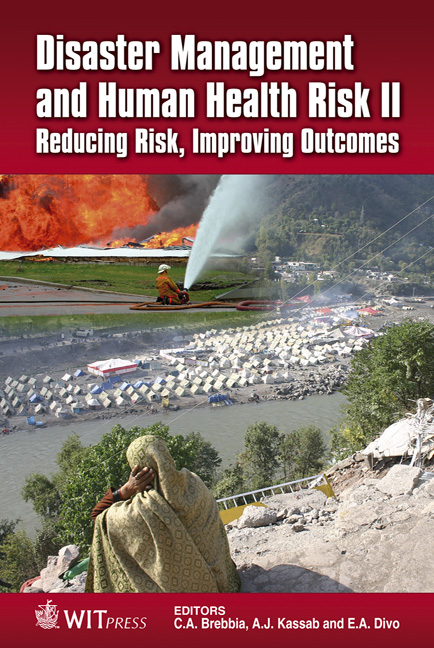Assessing Community And Region Emergency-services Capabilities
Price
Free (open access)
Transaction
Volume
119
Pages
12
Page Range
99 - 110
Published
2011
Size
579 kb
Paper DOI
10.2495/DMAN110101
Copyright
WIT Press
Author(s)
Z. Shoemaker, L. Eaton, F. Petit, R. Fisher & M. Collins
Abstract
To increase emergency preparedness for communities, steps must be taken to improve both soft (community planning, education and relationships) and hard (core operational capabilities) aspects of preparedness, resilience and recovery. While professional standards and accreditation organizations continue to improve individual capabilities of first responders and preventers, a tool to analyze a community’s full complement of prevention, mitigation, response, and recovery capabilities is still lacking. In order to address this area of concern, Argonne National Laboratory has created a methodology to measure a given community or region’s capabilities concerning its entire emergency-services sector. The resulting index accounts for emergency medical, law-enforcement, fire-service, search and rescue, explosive-threat response, 911 dispatch, and emergency-management capabilities, in a way that allows communities to analyze their capabilities relative to other communities of comparable size and hazard profile. The methodology captures a community’s aid and assistance agreements to measure expansive and redundant capabilities, as well as the presence of governmental coordination of the services, in a systematic manner. This tool can be used to aid communities in assessing their current capabilities as well as laying out a systematic approach to improving community resilience by targeting specific areas of weakness or areas where leveraging outside capabilities may be difficult. Keywords: emergency services, capabilities index, regional resilience, critical infrastructures.
Keywords
emergency services, capabilities index, regional resilience, critical infrastructures




